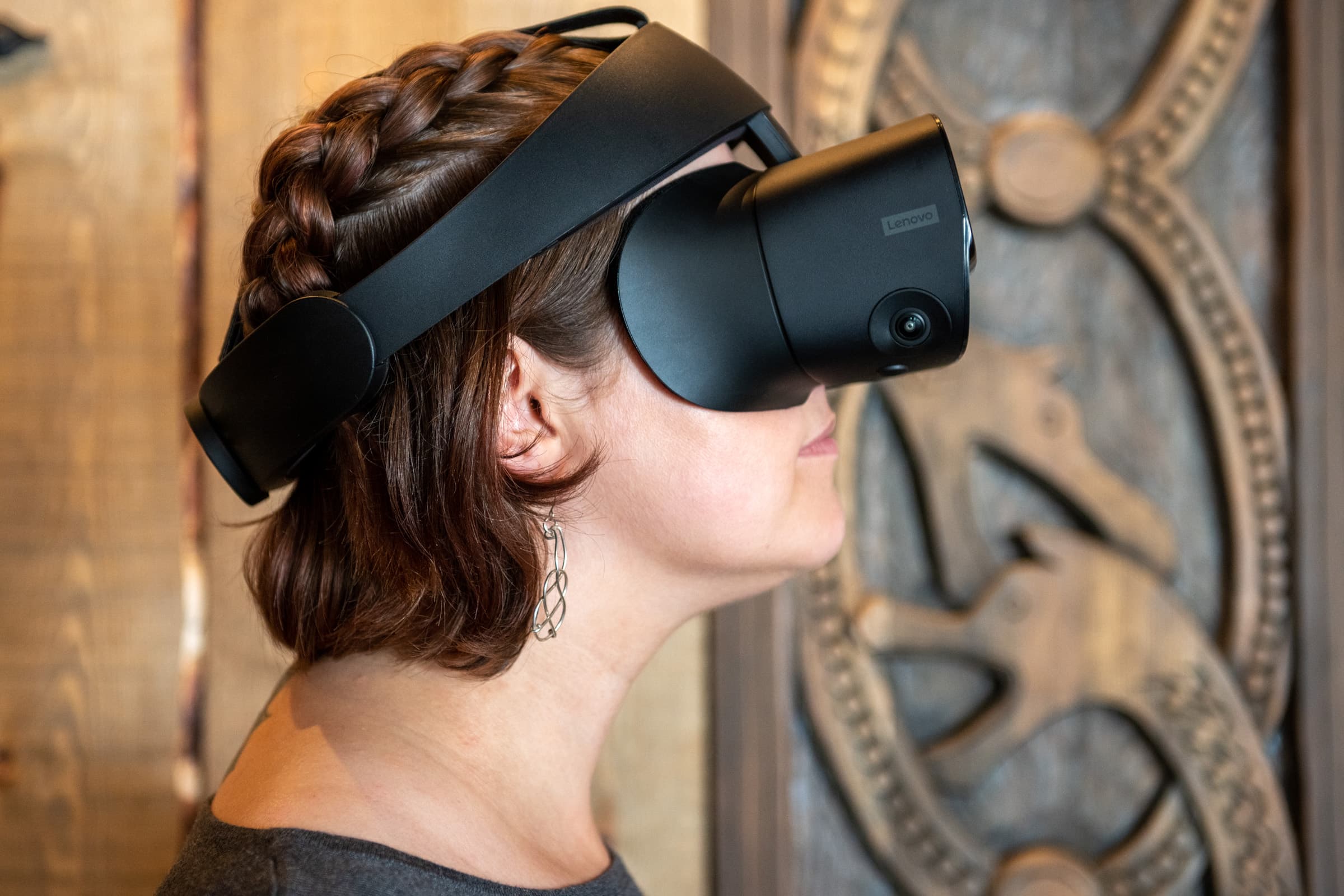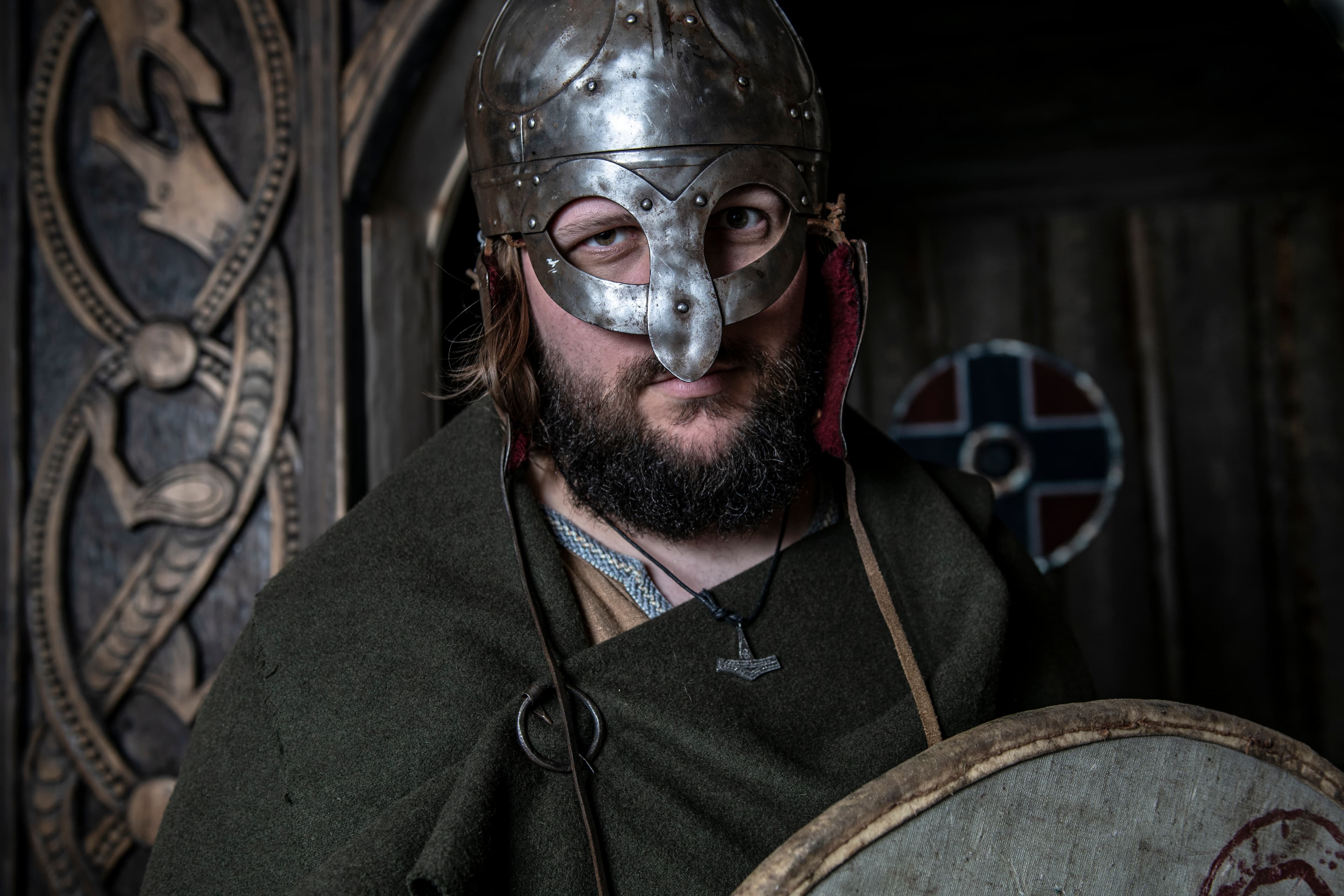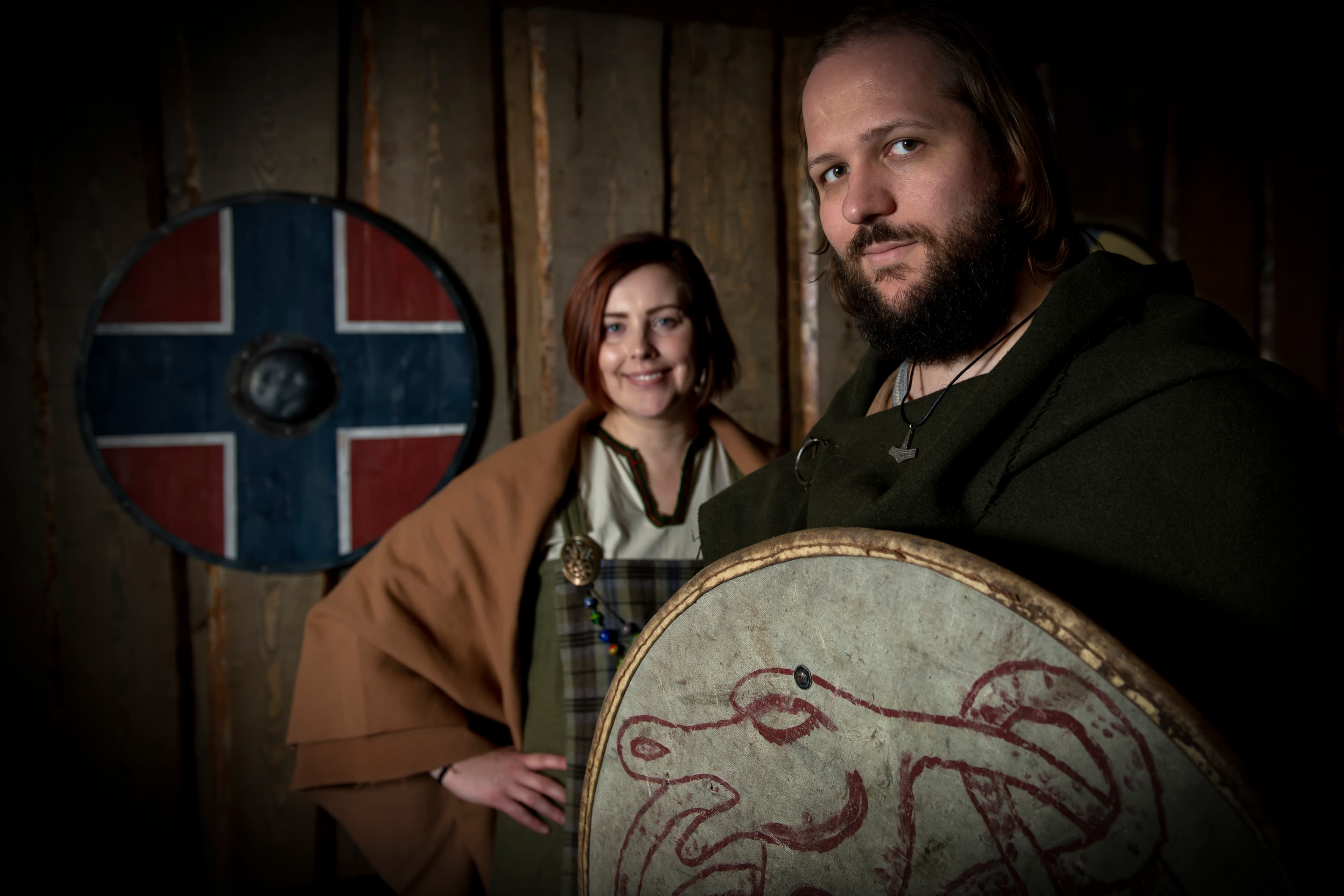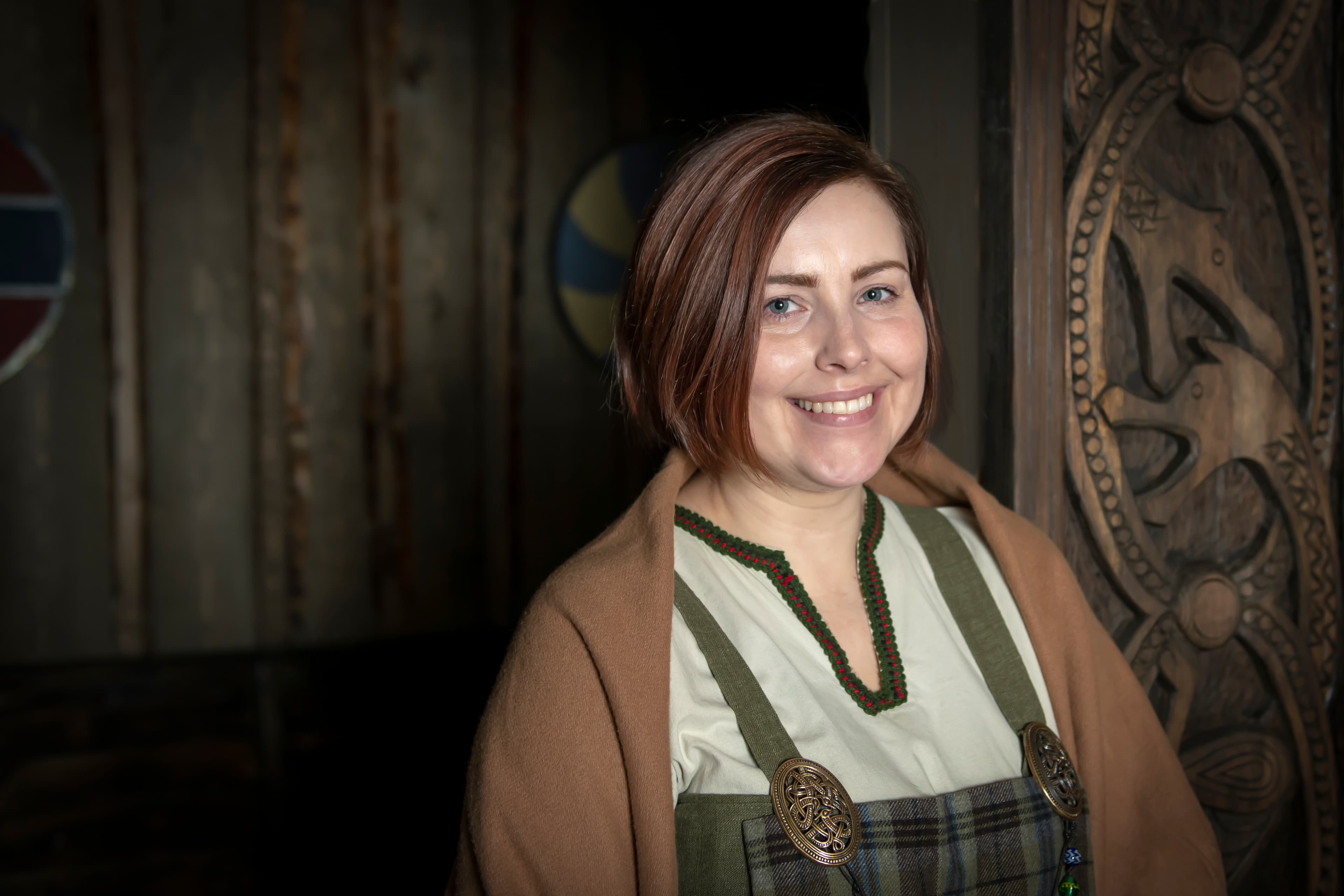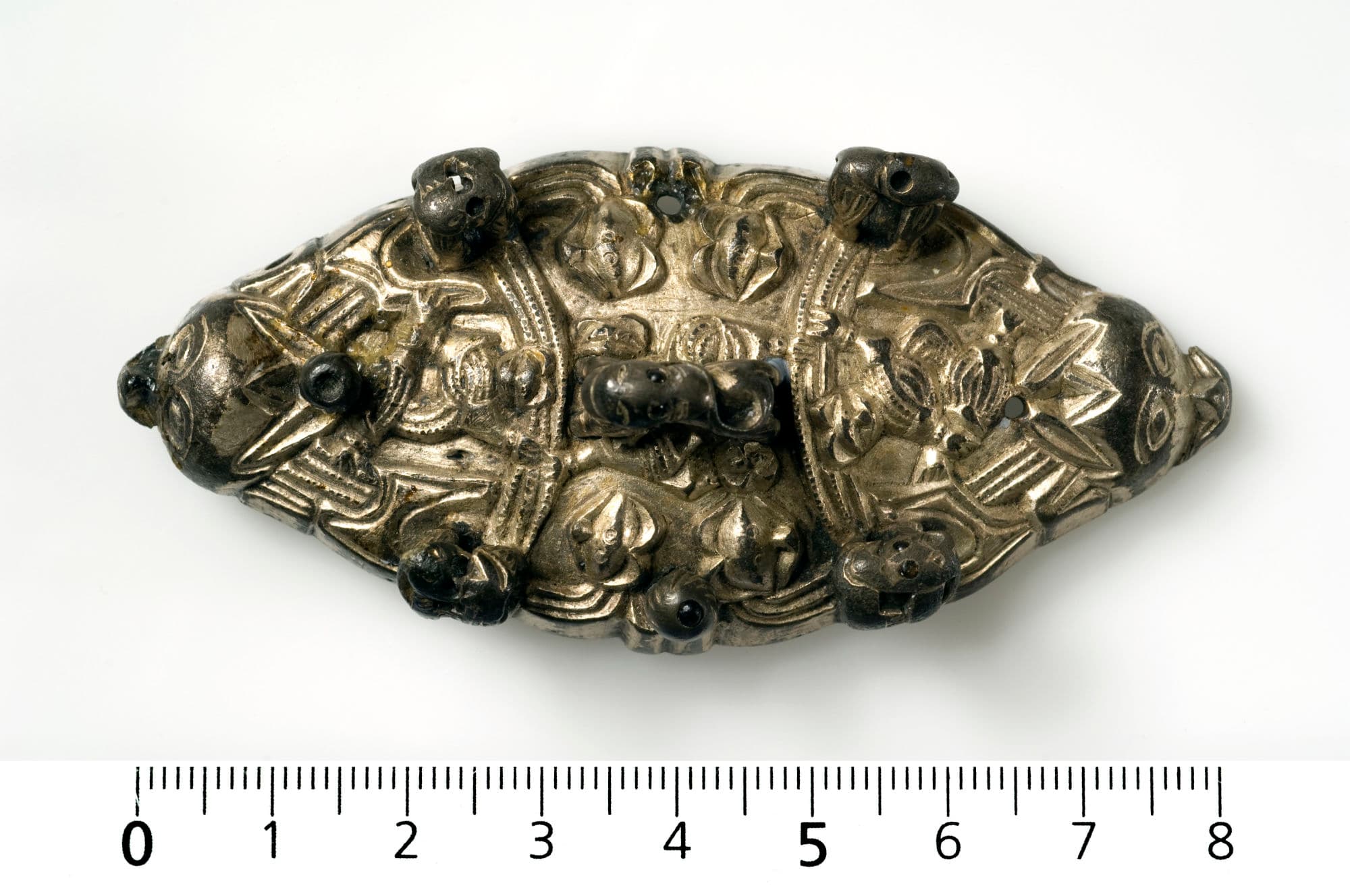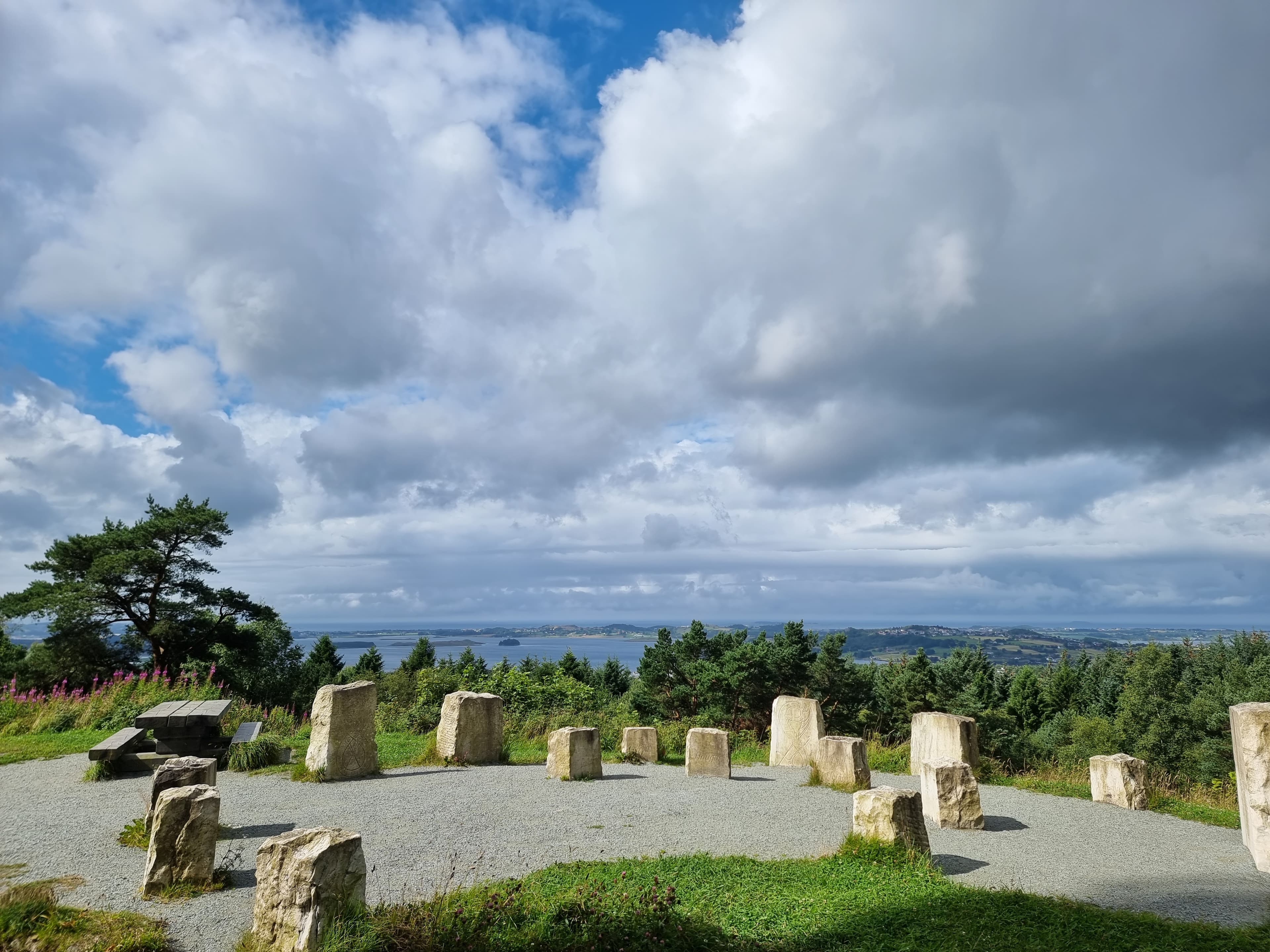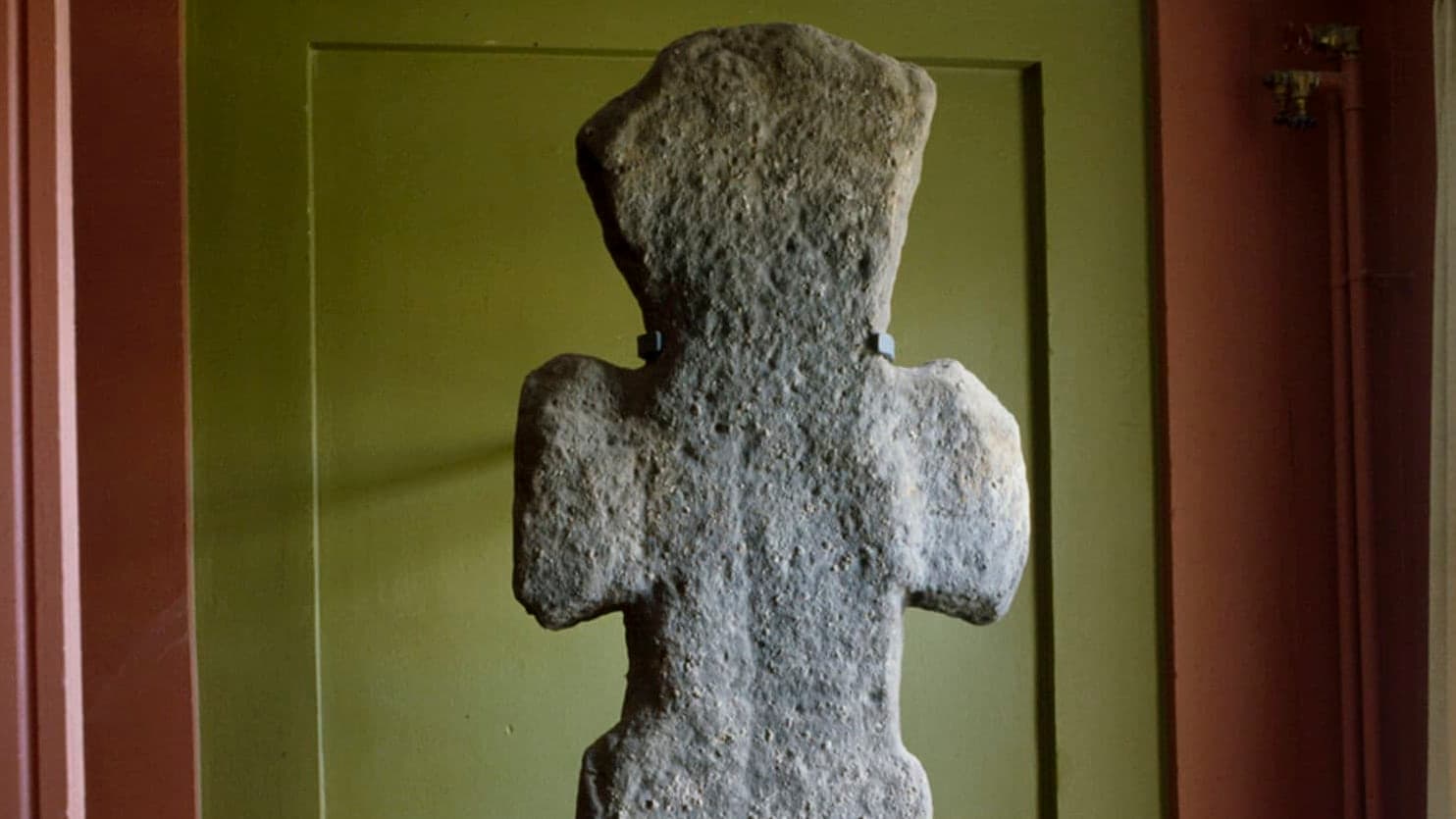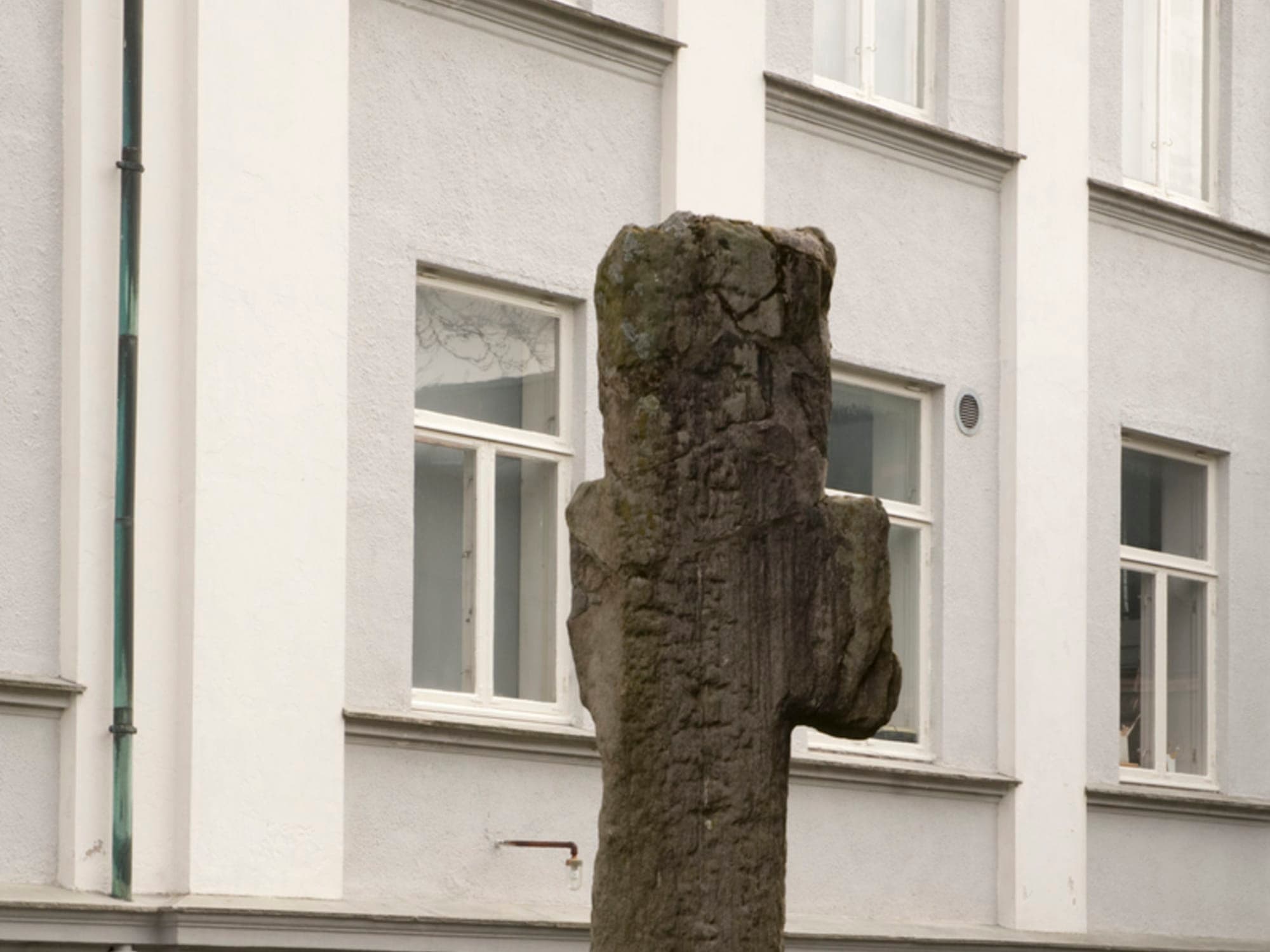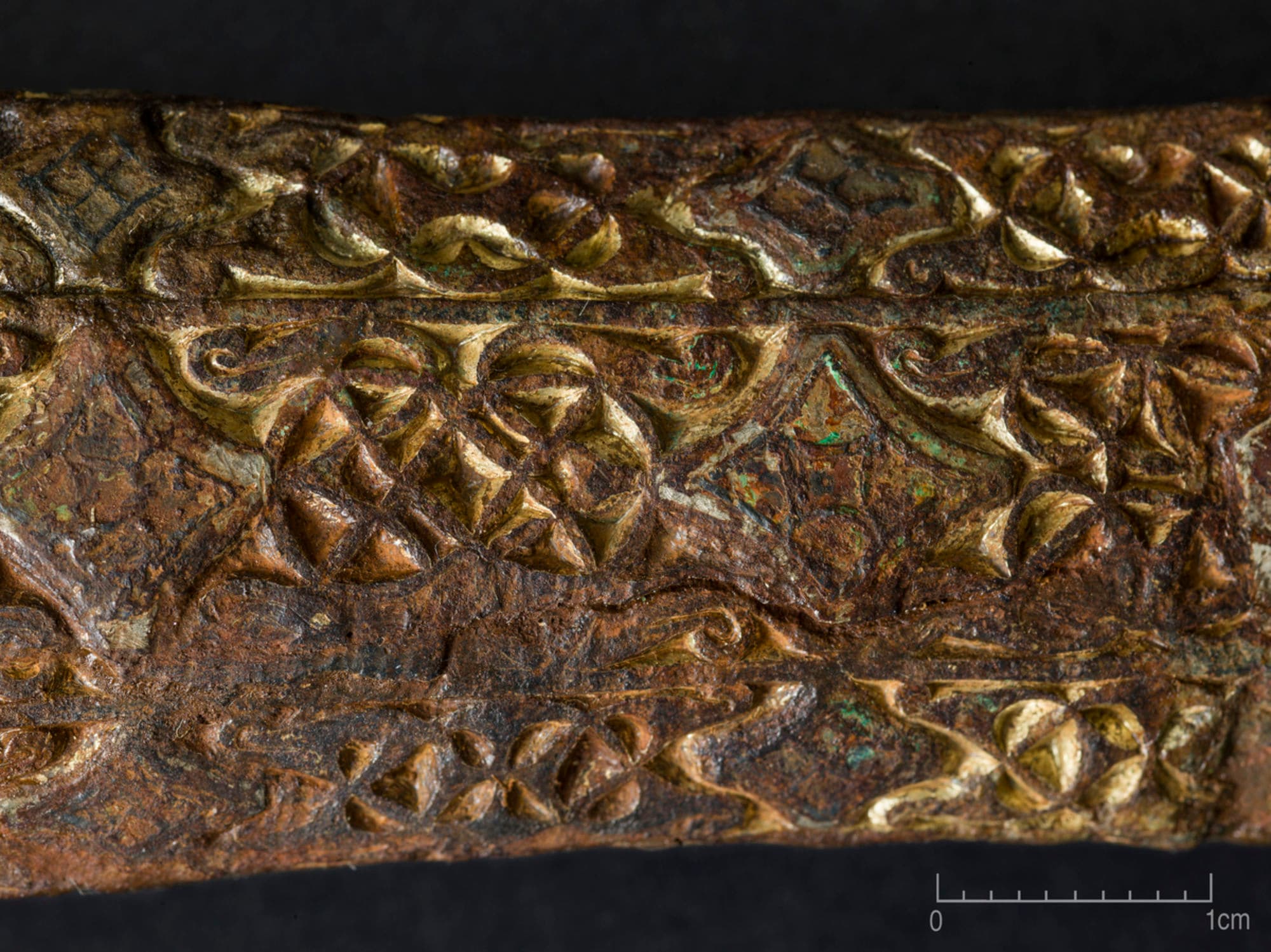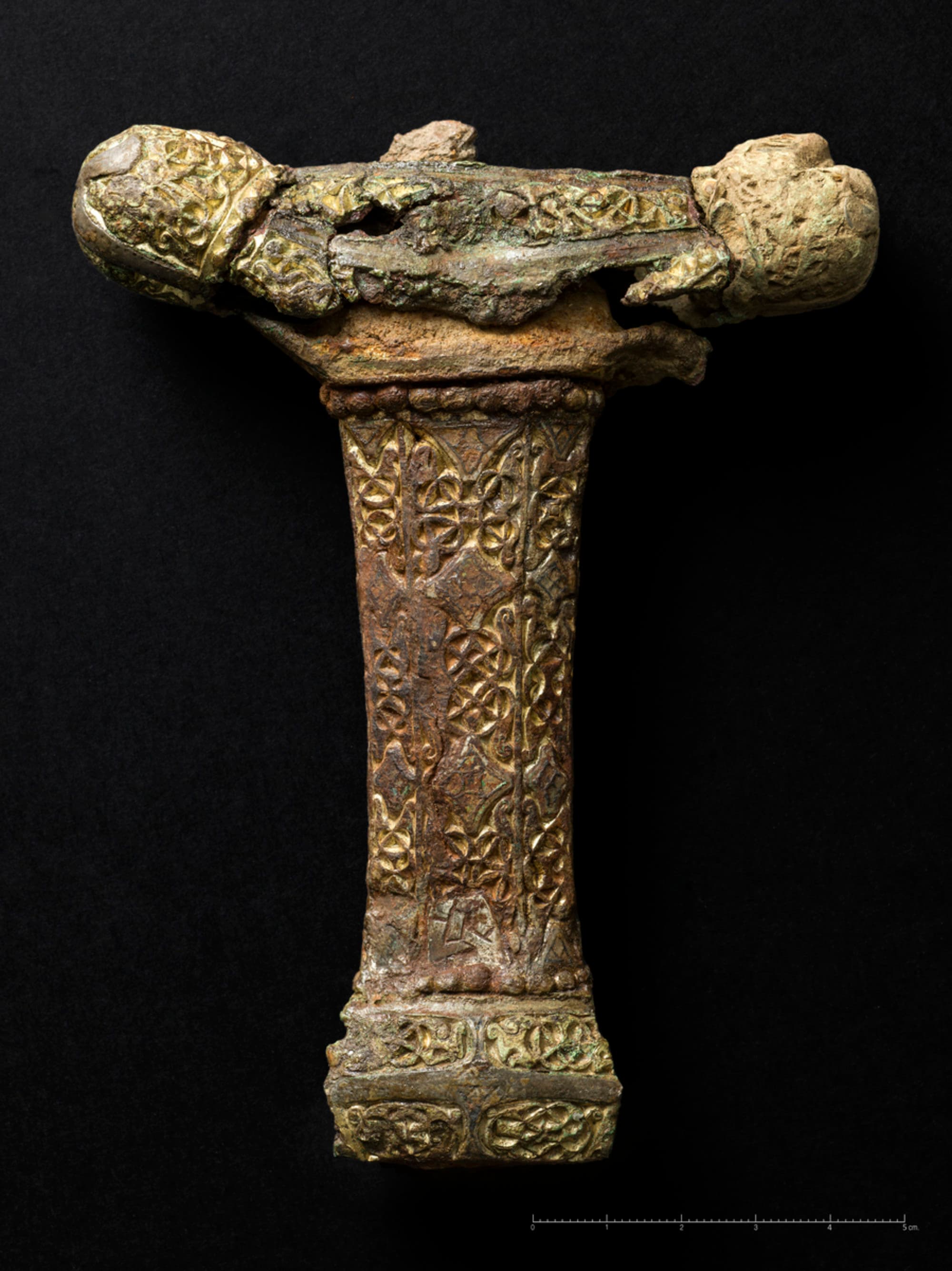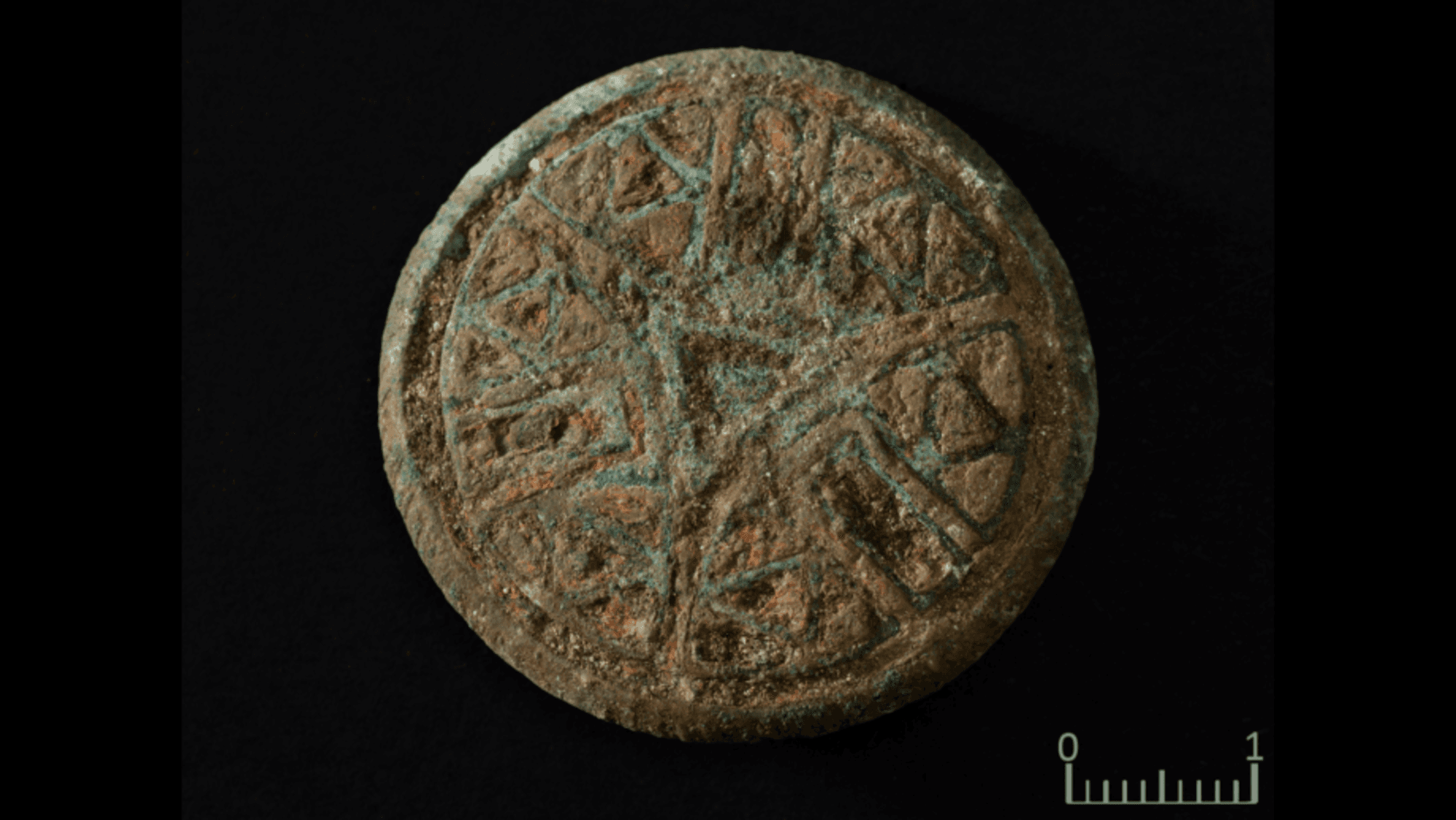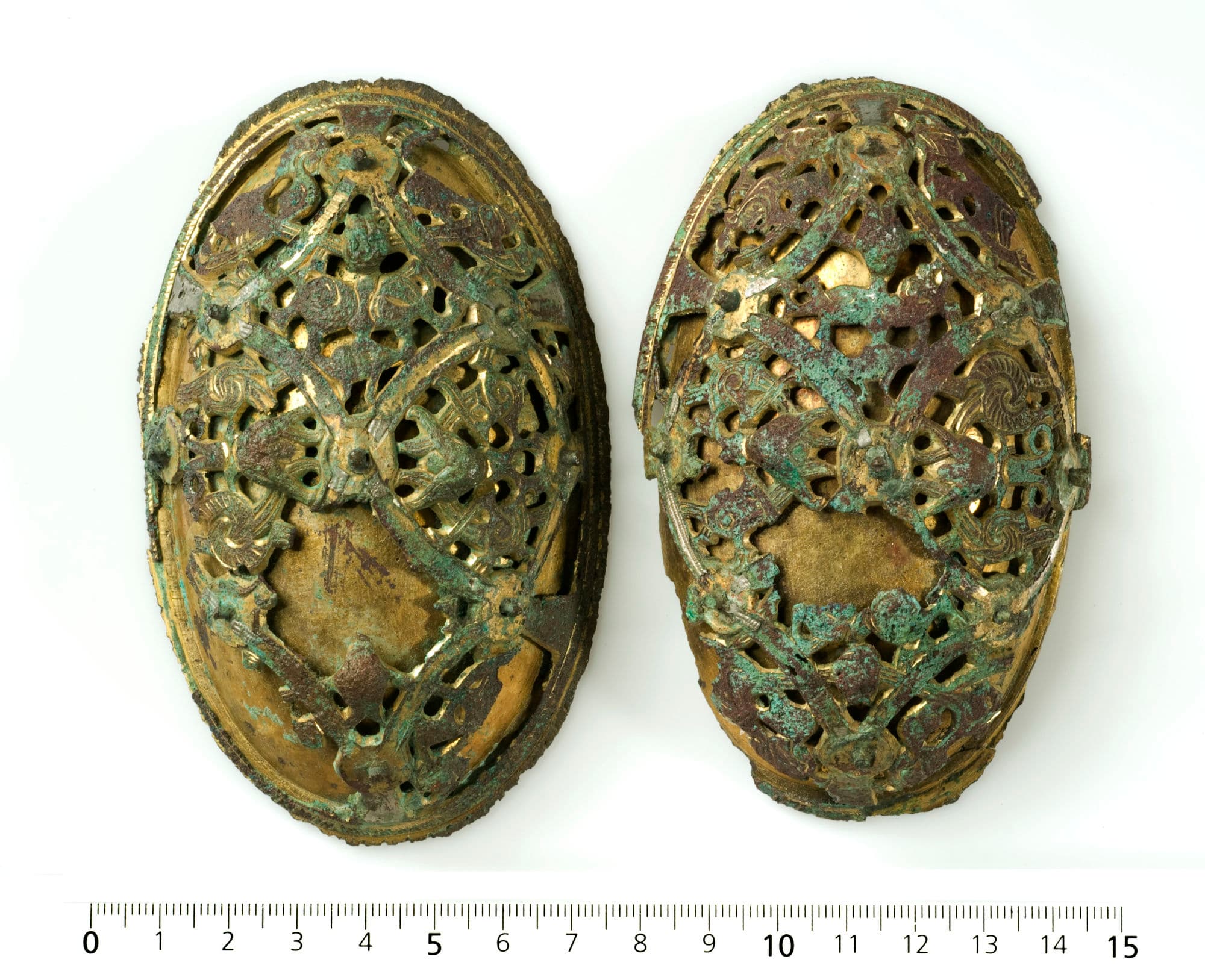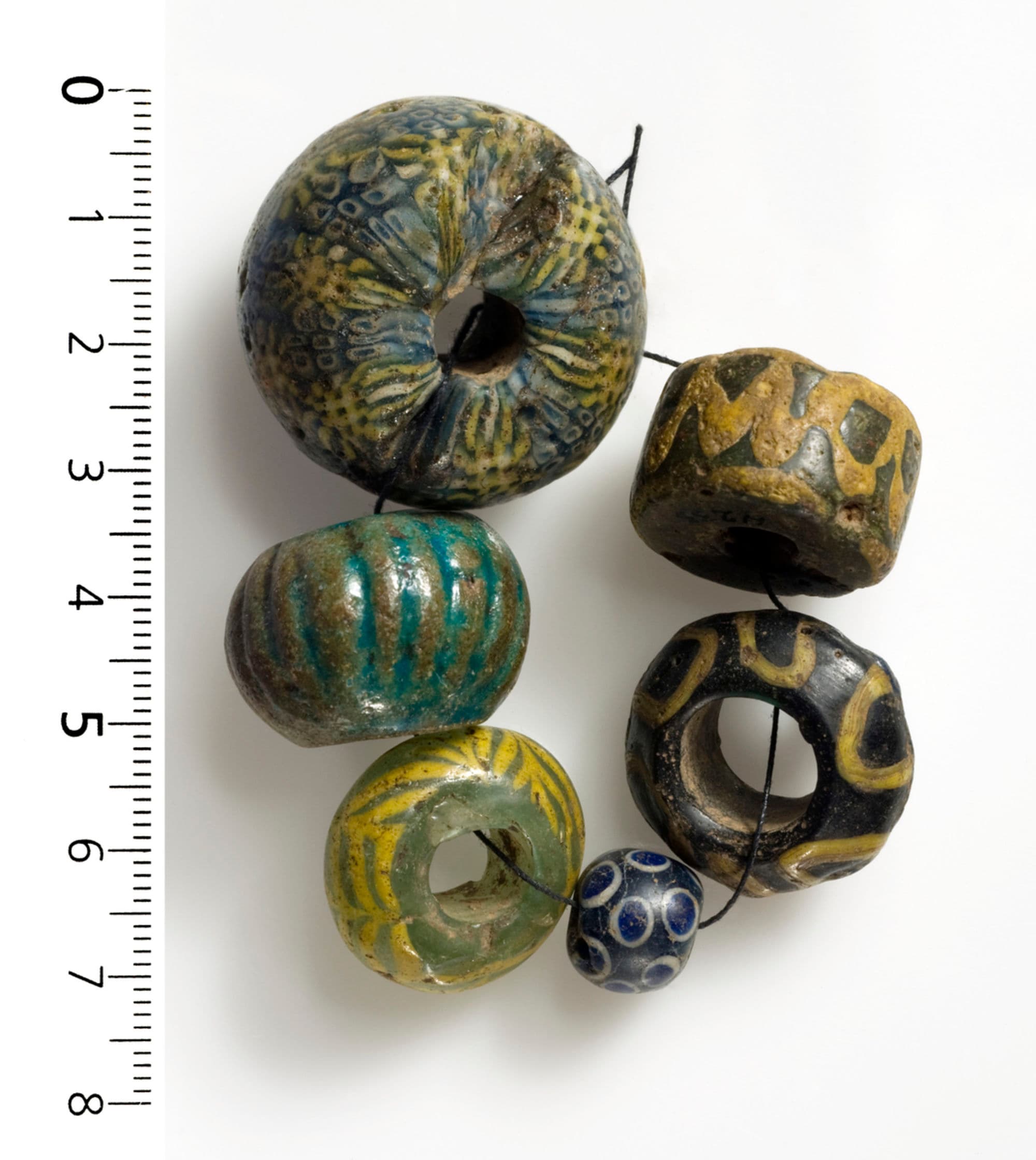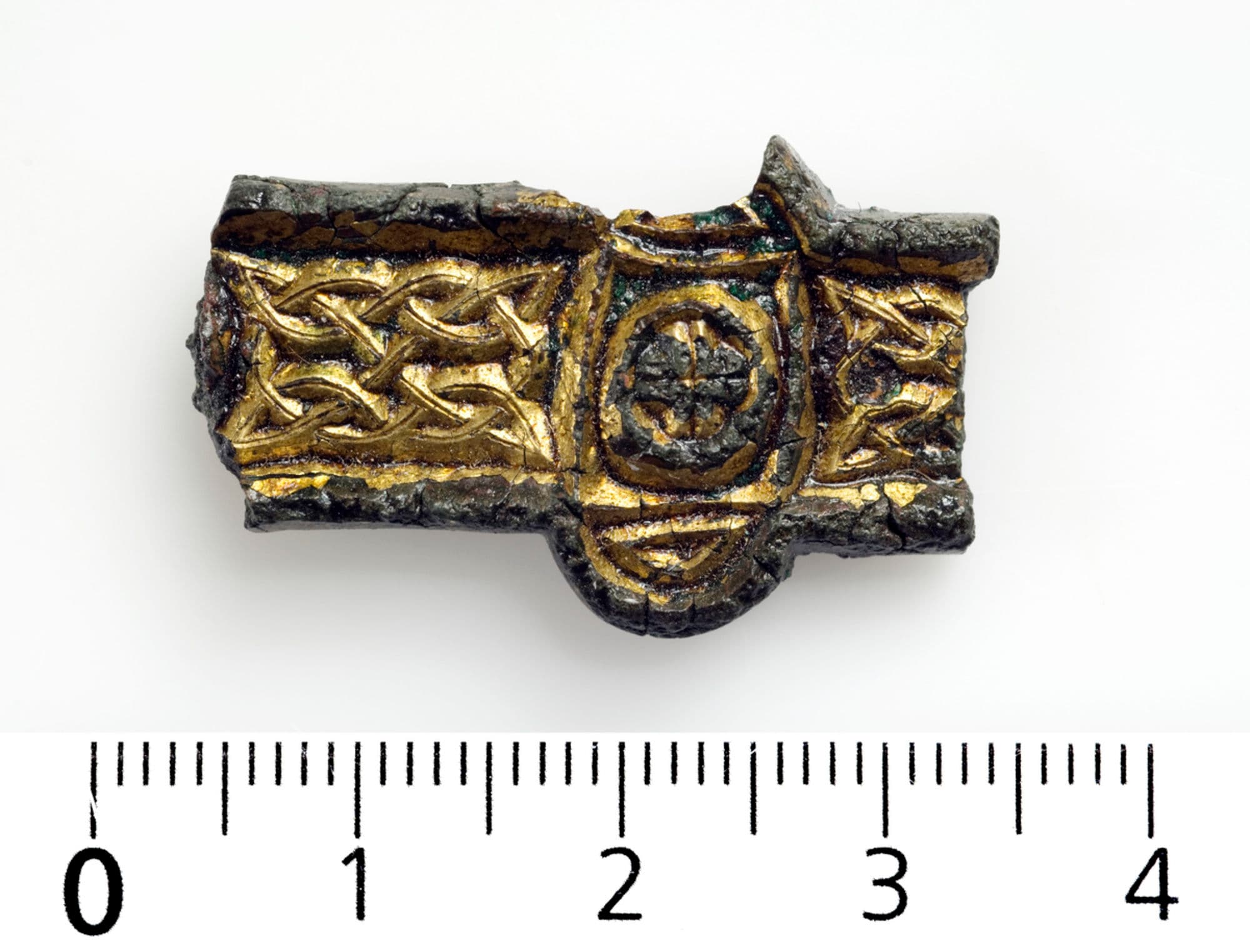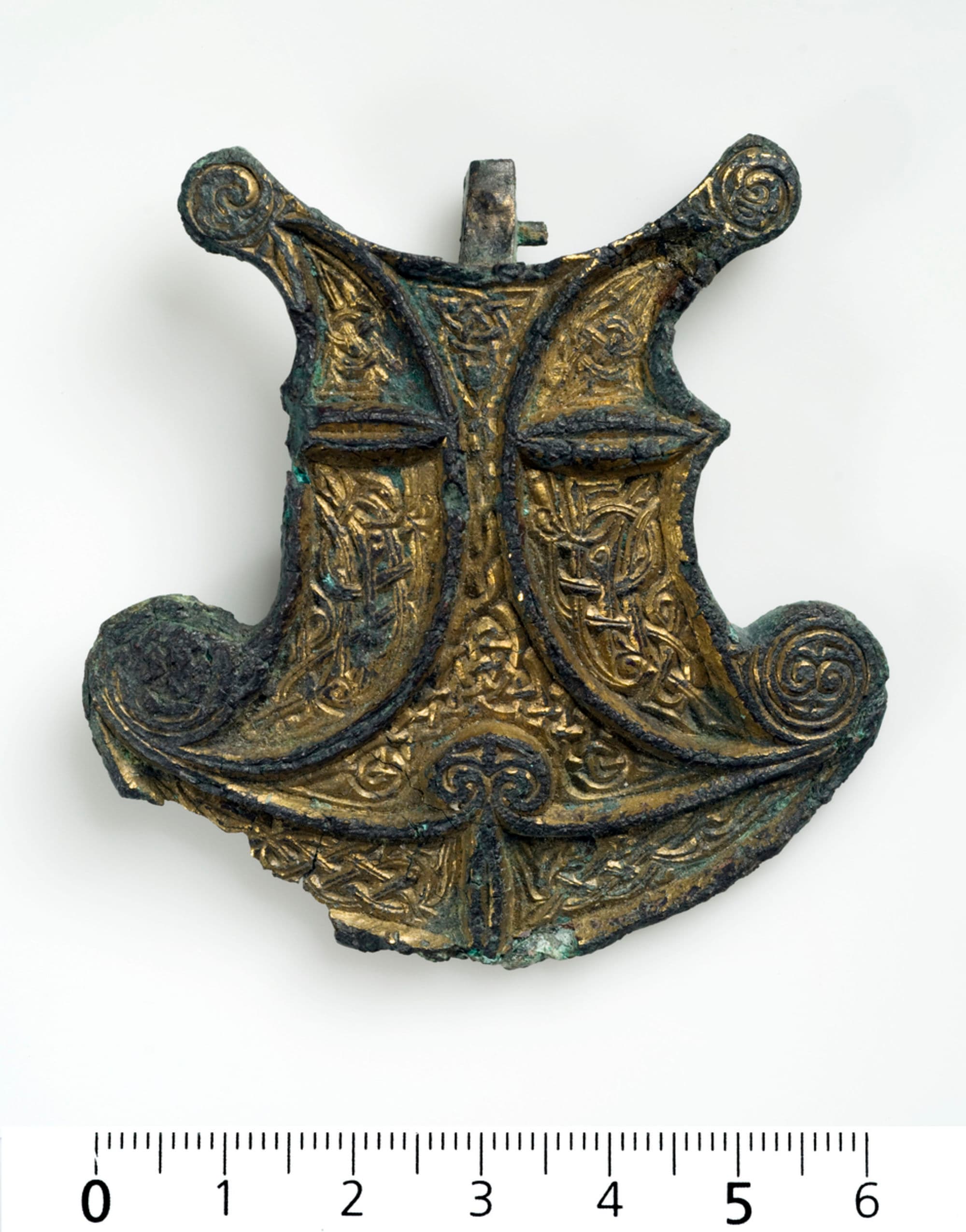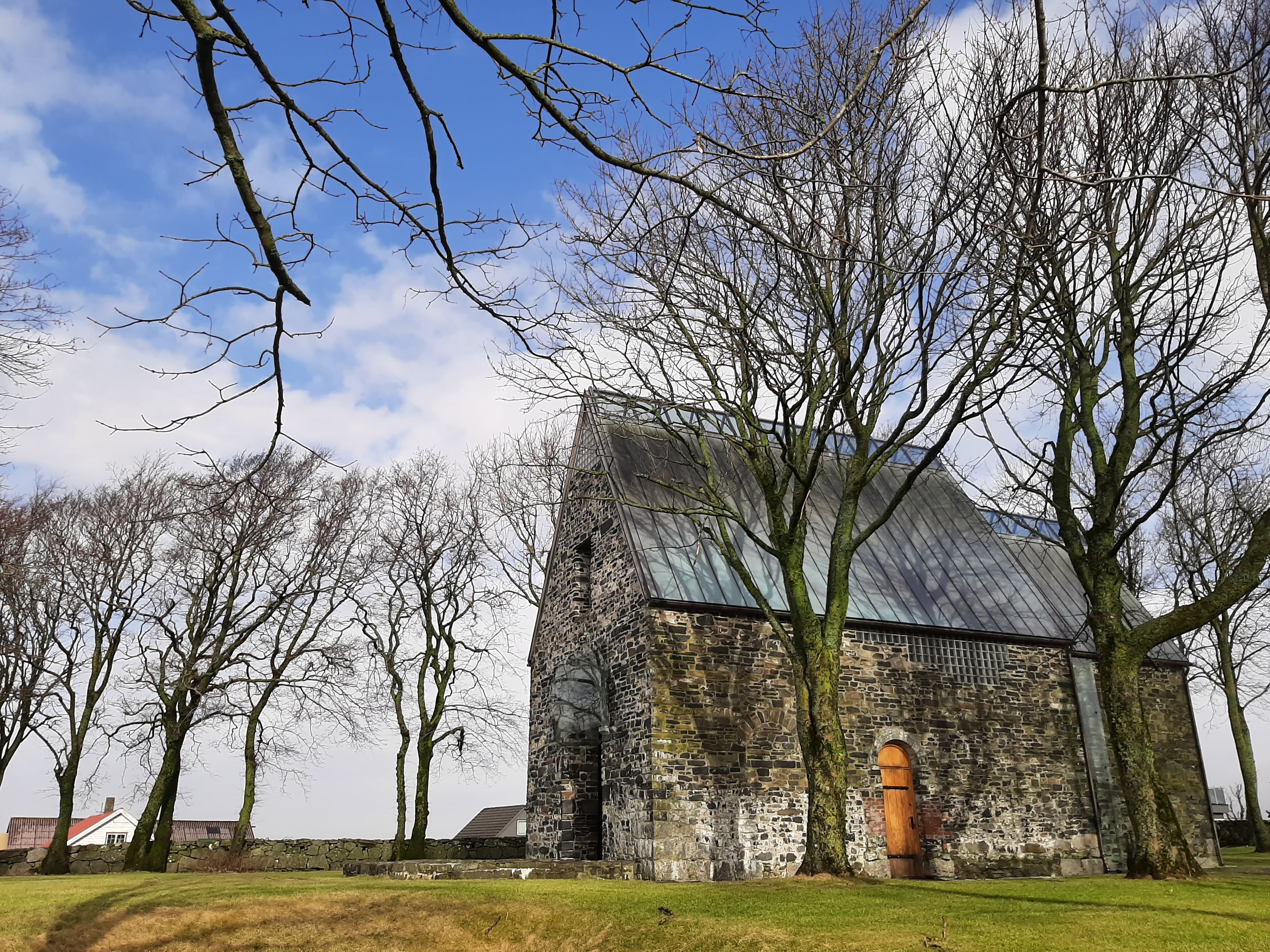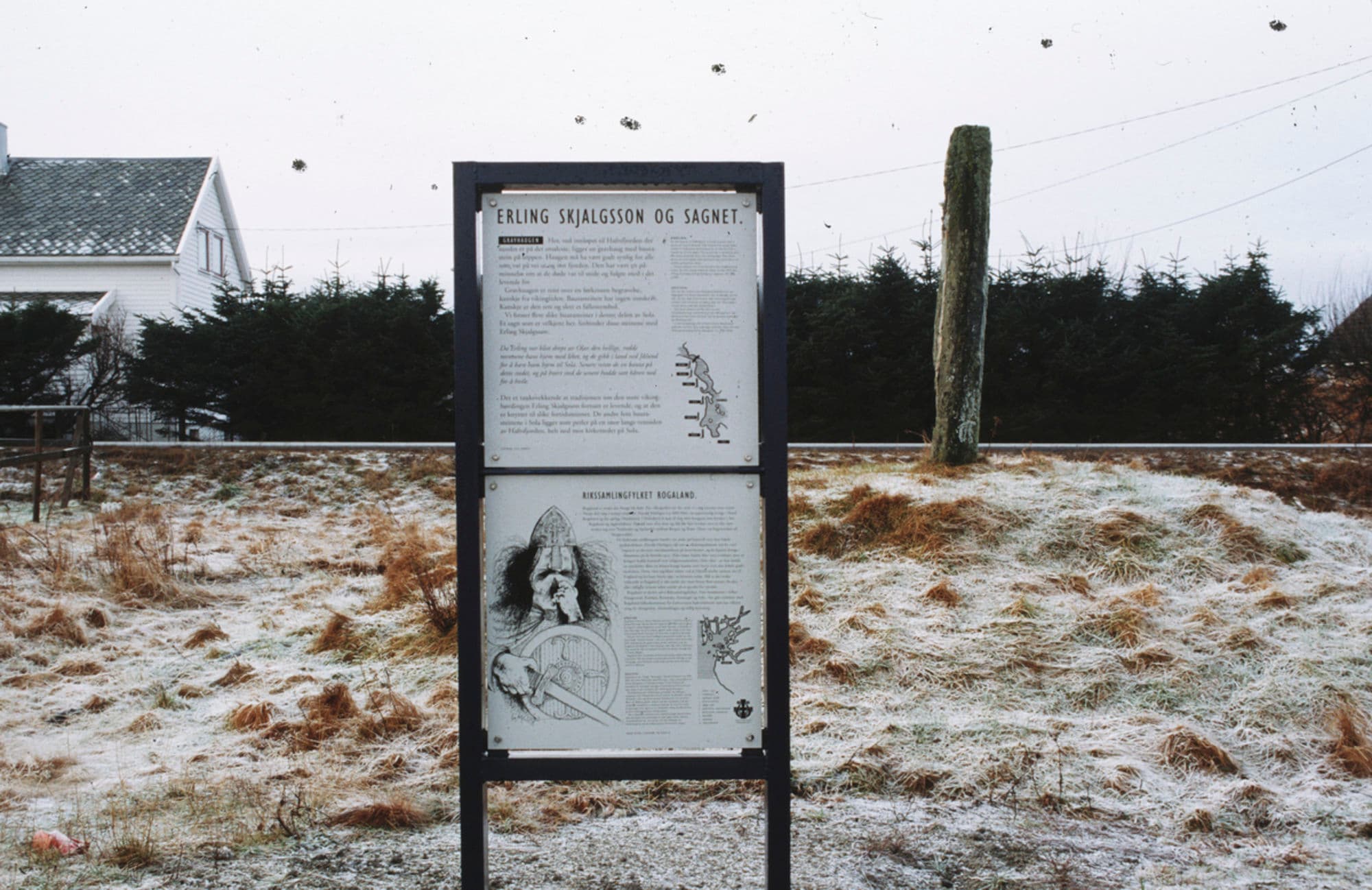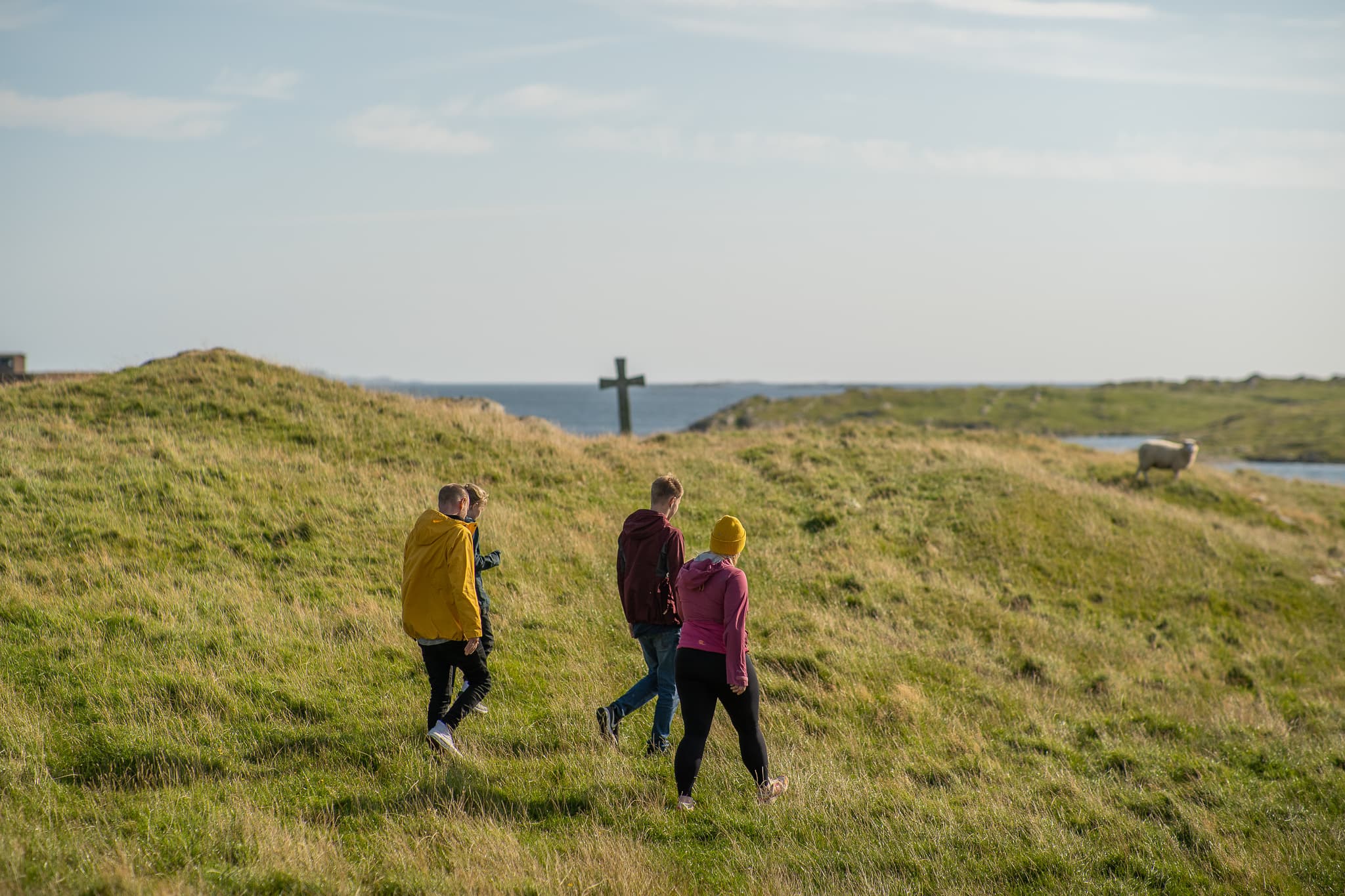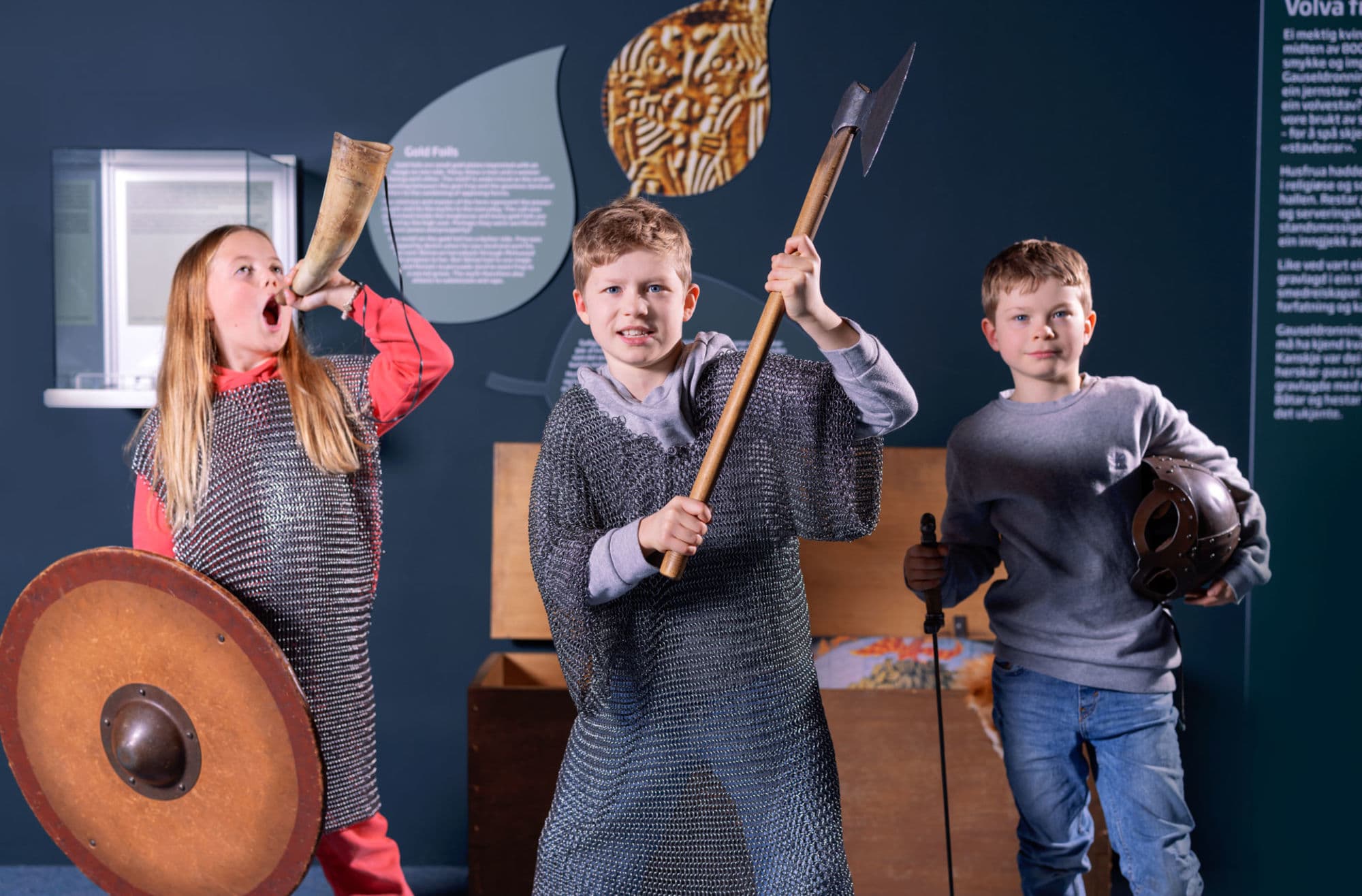
— Viking exhibition at the Museum of Archaeology
Culture and history
Follow the traces of the Vikings
- Summer
- winter
- spring
- autumn
Last updated 2025-07-04
Explore the Viking history of the Stavanger region - learn about the time before and during the infamous Viking Age (approx. 800-1000 AD).
Viking raids
When you think about Vikings, what is your first thought? Probably bloodthirsty warriors and plunderers, right? Although they were indeed both warriors and conquerors, most Vikings lived as ordinary peasants.
To "go Viking"
All Scandinavians who lived in the Viking Age are defined as Vikings; however, we mostly use the term today to refer to those who went "Viking", that is, those who went on raids or trade voyages.
The urge to travel came from the need for more land, but also due to trade, the desire for looting, or the pure adventure of travelling.
Seagoing ships enabled them to travel
The Vikings also settled in the places they travelled to, such as Russia, Ireland, Normandy, and the islands in the Atlantic Ocean. Traces of the Vikings are also found in the British Isles, in France, in the Mediterranean, in Greenland, and in the north-eastern part of North America. Their talents in shipbuilding allowed them to travel overseas; they had fast, seagoing ships.
Tracking the Vikings
Signs of Vikings can be found in several places in the Stavanger region and the Museum of Archaeology. Possibly the most famous Viking monument, set up in recent times, is Swords in Rock, which stands on historical grounds at Hafrsfjord. The monument was made by artist Fritz Røed. Hafrsfjord is assumed to be the site of the infamous battle that united Norway into one kingdom under Harold Fairhair.

Architecture and heritage
Swords in rock
Stavanger
The Swords in Rock monument in Hafrsfjord, Stavanger marks the Viking battle of Hafrsfjord when Norway was united into one kingdom.
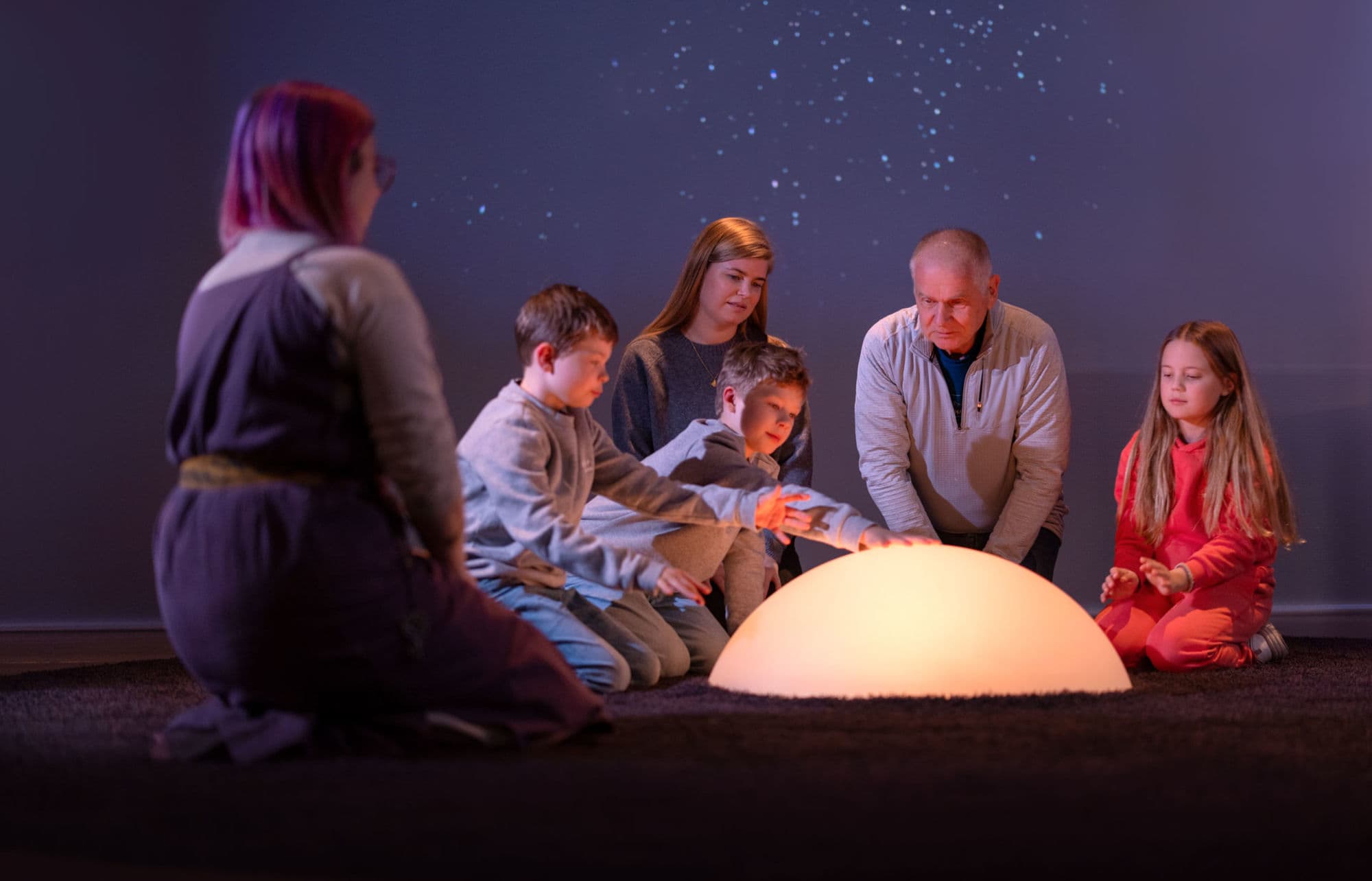
Art and museums
Museum of Archaeology in Stavanger
Stavanger
Learn about the treasures the Vikings brought back to Norway. Or come face to face with the 8,200-year-old skeleton from Vistehola? Visit the Archaeological Museum in Stavanger.
Explore the Viking Age with your own eyes
In a more modern-day way, you can experience with your own eyes the brutality of a typical Viking battle. Viking House in Stavanger is a visitor centre depicting a VR film of the famous battle of Hafrsfjord. You even get to sit in a Viking ship while watching the movie. How’s that for an exceptional experience? At Viking House, you can explore literature as well as other Viking-themed effects.
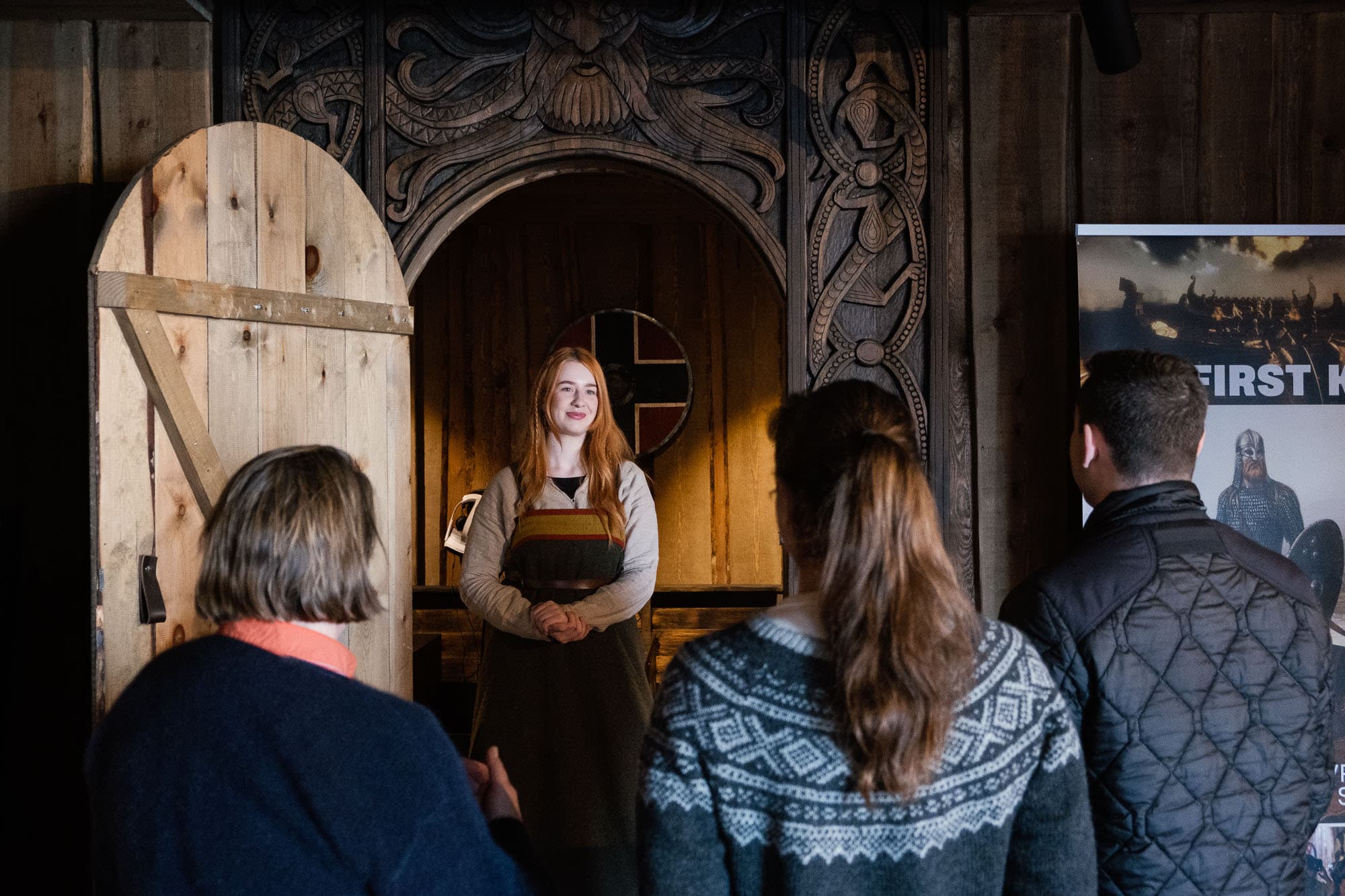
Architecture and heritage
Viking House
Stavanger
Viking House is a groundbreaking concept. A Virtual reality-based world-class visitor centre conveys the Viking history of the Stavanger region.
Several Viking finds
Gauseldronninga
A tomb was found on the farm Gausel in 1883 when the farm owner was clearing stones. Under a pile of stones, he found a stone chamber with several objects, some in noble metals. Later, they found out that the grave was a woman's grave from the ninth century, and because of what was found of objects there, it tells us that she belonged to the upper strata of society. Based on this, the woman was called "Gauseldronninga" (the queen of Gausel). They found objects such as costume buckles of silver and bronze, silver buckles, bracelets in silver, a ring in jet (gemstone), pearls of mosaic, glass or stone, knives, a frying pan, remains of a bronze container with lion's head-shaped handle attachments, a bronze needle and horse teeth.
Stones from the Haraldstårnet tower
At Ullandhaug, there are six large stones from the Haraldstårnet tower, erected in 1896. The stones are between 82 and 140 cm high, and 10 small ones are 52 cm high. On each stone, there is an inscription. During World War II, the Germans rebuilt the tower into an air defence battery, but the stones were preserved. After the current Ullandhaug tower was built, the stones were placed in the area outside.
Two stone crosses
At the Stavanger Museum in Stavanger, there are two stone crosses from the early Middle Ages. It is the memorial cross over Erling Skjalgsson with the inscription: "Alfgeir the priest raised this stone in honour of Erling his master, who was betrayed in the battle against Olav". The cross was thus erected after Erling was killed by Olav Haraldsson's men in the battle of Soknasundet on 21 December 1028. There is also a copy of the cross in the centre of Sola. In the garden of the museum are also the remains of a stone cross that was found at Tjelta in Sola. It was probably once raised at the burial mound of Ormhaug. Visit the Stavanger Museum.
Unique Viking sword found in the Jåttå area
Archaeologists have uncovered a fantastic Viking find in Jåttå in Stavanger: a magnificent sword hilt richly decorated with gold and silver. The handle, with its exquisite animal and geometric patterns, probably originates from England and dates from around 800 AD. The Jåttå–Gausel site is known to have been a point of contact with the British Isles, which this sword confirms.
Artefacts that bear witness to a powerful Stavanger in the Viking Age
In the exhibition ‘Veit du nok eller kva’? (Do you know enough?), and in the anniversary exhibition ‘Katedralens hemmeligheter’ (Secrets of the Cathedral), the Archaeological Museum displays a collection of iconic brooches from the British Isles.
One of the finds is a beautiful buckle used as decoration on clothing. It is typical metalwork from the British Isles at this time, which makes it clear that Stavanger had good trade links with Great Britain. The discovery of several other such exclusive objects bears witness to the cathedral's growing wealth and connections to the rest of the world, including the Vatican. Read about the cathedral's lost treasures uncovered.
Women in the Viking Age
Women in the Viking Age played a much more active and significant role than many think. They ran households and farms, managed wealth and could carry keys as a symbol of authority. Some women also had international connections and high status, such as the ‘Gauseldronningen’ (Queen of Gausel), mentioned above, buried in Stavanger with artefacts from, e.g. Ireland. The findings suggest that women were both politically and religiously influential in the Viking Age, and that their history is very much worth telling.
Source: Archaeological Museum at the University of Stavanger
The Viking chief from Sola Erling Skjalgsson
The man who had the privilege of introducing Christianity in southwestern Norway is the Viking chieftain Erling Skjalgsson. A monument erected in memory of the king stands next to the restored church ruin at Sola. It is even possible to experience an entire trail of Erling Skjalgsson menhirs/standing stones. There are reportedly as many as 12 of these stones. They stand in a row from the Hafrsfjord bridge to Sola ruinkyrkje (church ruin).
Discover the Viking traces

Architecture and heritage
Sola ruinkyrkje (ruin church)
Sola
Sola ruinkyrkje is a rebuilt medieval church. The church was until the 19th century an important sailing mark for the Jæren coastline.

Architecture and heritage
Erling Skjalgsson monument
Sola
Erling Skjalgsson monument is sited near the Ruinkirken. The monument was erected in memory of Erling Skjalgsson (975-1028), Solas most famous 'son'.

Mountain hikes and walks
Sola hike (Solaturen)
Sola
A nice and easy hike in the historic Sola. Highlights are Sola Ruinkirke, monuments and war memorials in a beautiful natural landscape.

Cycling
Bike tour to Madla via Ullandhaug and Hafrsfjord
Stavanger
A varied and slightly hilly cycle route southwest of Stavanger city centre. You pass through residential areas, then through forest, after a while along the sea, and in the end along a peaceful hiking path at Madla.
The Iron Age Farm and traces from the Viking Age
Ullandhaug in Stavanger is home to the Iron Age Farm, a reconstruction based on genuine archaeological finds from the Migration Period, around 350–550 AD. The farmhouses themselves were abandoned before the Viking Age began, but there are several graves here from the Viking Age, and farming was probably also practised in the area at that time.
Overlooking Hafrsfjord, the site of the legendary battle that, according to legend, united Norway into one kingdom, the Iron Age Farm is located in the heart of a historic area. Here you will not only get a taste of the Iron Age, but also a glimpse into Viking-era Rogaland.
Source: Museum of Archaeology, University of Stavanger
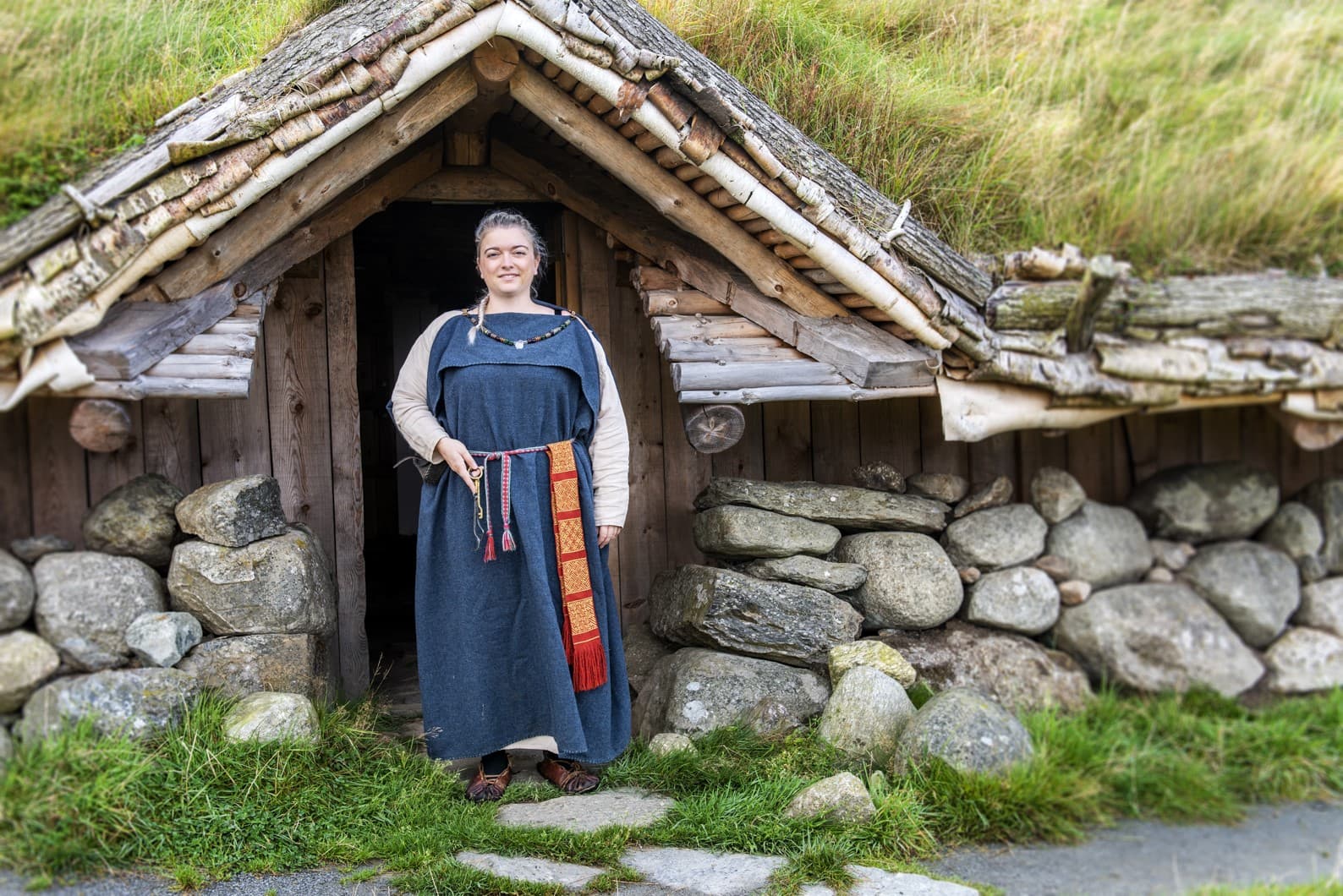
Art and museums
Iron Age Farm in Stavanger
Stavanger
The Iron Age Farm at Ullandhaug in Stavanger is a reconstructed farmstead from the Migration Period (350-550 AD).
The Viking treasures on the islands surrounding Stavanger
In prehistoric times, the islands in the Boknafjord basin were at the heart of all ship travel. Burial mounds and artefacts have been found along the Soknasundet strait, which lies between the islands of Bru and Sokn. Among the pieces found are, for example, a sword from the Viking Age and two lead crosses with inscriptions found in an older, pagan grave. The writing is in runes, but the text is Latin, and it is probably a religious poem from the early Middle Ages that possibly originated from France.
Utstein Monastery
The monastery is the only well-preserved monastery in Norway from the Middle Ages. The history of the monastery is that there has been both a royal estate and a monastery here. Harold Fairhair has evidently lived at Utstein. The Old Norse kings' sagas state that Fairhair spent a lot of time on the royal estate at Utstein as he grew older.
On the ancient farmland surrounding Utstein Monastery, there have been several findings. As late as 2021, two invaluable Viking finds were made at Klostergarden: a polyhedral bead from the period 766-966 and a coin from 1024.
The Sørbø church at Rennesøy
The church was built around 1140 and is one of the oldest preserved buildings in the county. A few metres north of the southwest corner of the cemetery wall lies a runestone of 2.3 metres. The inscription says: "Tore raised this stone after his brother Igul". The name Tore was, among other names, one of the most common in the Viking Age.
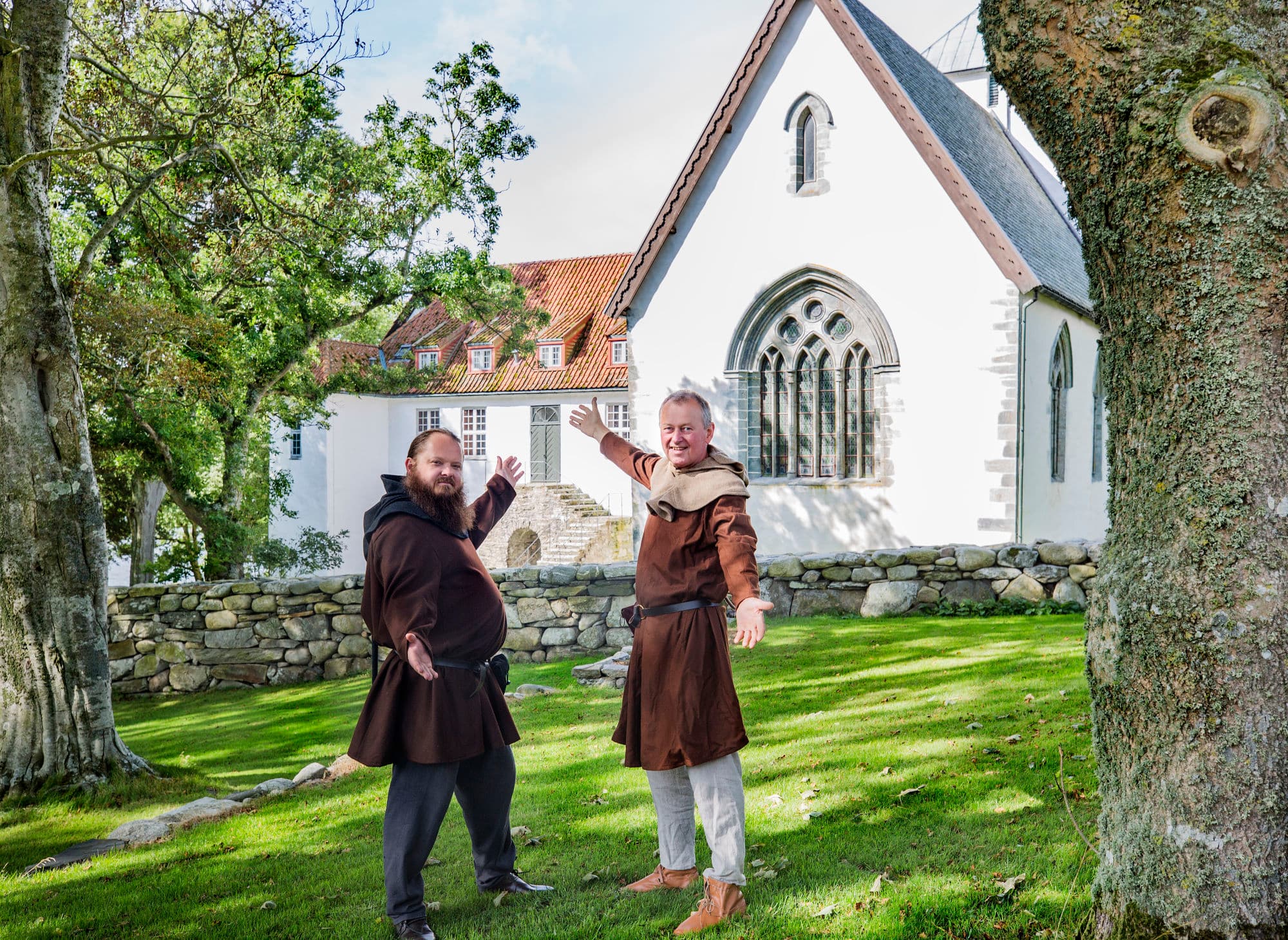
Architecture and heritage
Utstein Monastery
Stavanger
Utstein Monastery is Norway’s best-preserved medieval monastery, beautifully situated in a protected cultural landscape on the island of Mosterøy, about a 30-minute drive from Stavanger.
Christian influence from Ireland
The Vikings who went on raids to Ireland were largely influenced by the Christian faith, which was strong in Ireland at the time, several Vikings returned with Christian symbols and took Christianity back home to Norway. Some of the signs of this are the many stone crosses that were assembled in the region.

Architecture and heritage
The stone crosses at Tjora
Sola
The stone crosses at Tjora testify to the contact with the Celtic church in Great Britain, these crosses are only found in western Norway. It also indicates that the Christianisation of Norway took place over a longer period than 35 years.

Architecture and heritage
The Stone cross and St. Clemens church ruin
Kvitsøy
The hiking area on the far east of the island of Kvitsøy gives you insight into exciting cultural history. You will witness the contours of the ruins of St. Clemens Church. In addition, a stone cross, Steinkorset, stands here, four meters above the ground.
Source of literature:
- Vikingløypa gjennom Rogaland, of and by: Per Hernæs, Geir Sør-Reime, Kjersti Vevatne, Anne Kari Skår, Per Haavaldsen, Trond Løken, Rikssamlingsfylket Rogaland. Published in Stavanger: Rikssamlingsfylket Rogaland and Museum of Archaeology in Stavanger, 1999.
- Museum of Archaeology in Stavanger
